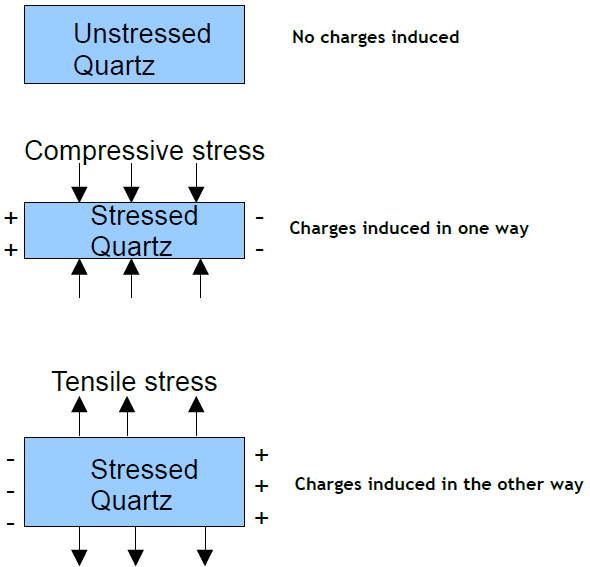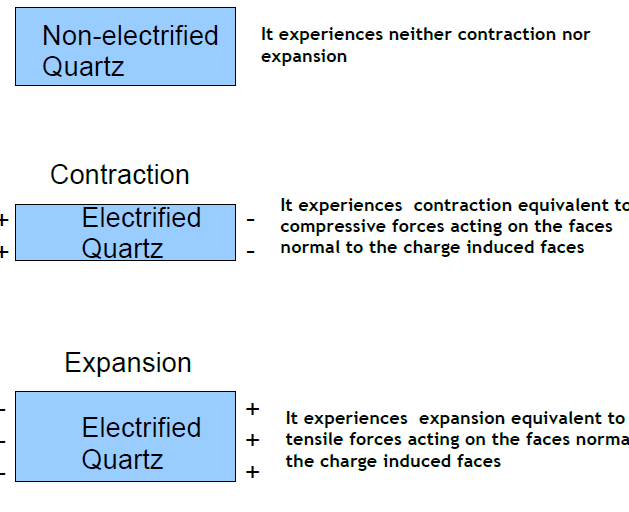Piezoelectric Effect
Piezoelectric effect: When crystals like quartz or tourmaline are stressed along any pair of opposite faces, electric charges of opposite polarity are induced in the opposite faces perpendicular to the stress. This is known as Piezoelectric effect.

Piezoelectric effect- Mechanism: Piezoelectric and inverse piezoelectric effects are only exhibited by certain crystals which lack centre of symmetry. In a piezoelectric crystal, the positive and negative electrical charges are separated, but symmetrically distributed, so that the crystal overall is electrically neutral. Each of these sides forms an electric dipole and dipoles near each other tend to be aligned in regions called Weiss domains. The domains are usually randomly oriented, but can be aligned during poling , a process by which a strong electric field is applied across the material, usually at elevated temperatures.
When a mechanical stress is applied, this symmetry is disturbed, and the charge asymmetry generates a voltage across the material. For example, a 1 cm cube of quartz with 2 kN (500 lbf) of correctly applied force can produce a voltage of 12,500 V. Piezoelectric materials also show the opposite effect, called converse (inverse) piezoelectric effect, where the application of an electrical field creates mechanical deformation in the crystal.
Inverse piezoelectric effect: When an alternating e.m.f is applied to the opposite faces of a quartz or tourmaline crystal it undergoes contraction and expansion alternatively in the perpendicular direction. This is known as inverse piezoelectric effect. This is made use of in the piezoelectric generator.
